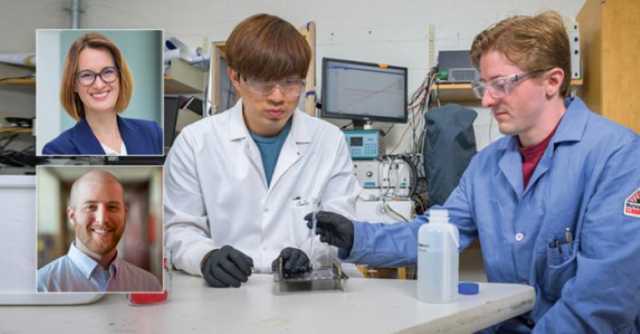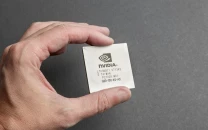Breakthrough method converts plastic waste into functional electronic devices
Scientists have developed a chemical reaction that converts Styrofoam into a high-value conducting polymer

Scientists from the University of Delaware and Argonne National Laboratory have developed a chemical reaction that converts Styrofoam into a high-value conducting polymer known as PEDOT:PSS.
This breakthrough, detailed in a new paper published in JACS Au, demonstrates how upgraded plastic waste can be incorporated into functional electronic devices, such as silicon-based hybrid solar cells and organic electrochemical transistors.
Laure Kayser, assistant professor at UD, and her team have been working with PEDOT:PSS, a polymer known for its electronic and ionic conductivity. They sought to synthesize this material from plastic waste as reported by the Eureka Alert website.
The research collaboration began when Kayser connected with Argonne chemist David Kaphan at a UD event. The teams hypothesized that PEDOT:PSS
could be made by sulfonating polystyrene, a synthetic plastic found in disposable containers and packing materials.
Sulfonation, a process that replaces a hydrogen atom with sulfonic acid, can create various products like dyes, drugs, and ion exchange resins. The researchers aimed to find a middle ground between "hard" and "soft" sulfonation methods. "A reagent that is efficient enough to get really high degrees of functionalization but that doesn't mess up your polymer chain," Kayser explained.
The researchers initially used a method described in a previous study for sulfonating small molecules, employing 1,3-Disulfonic acid imidazolium chloride ([Dsim]Cl). However, adding functional groups to a polymer is more challenging due to the difficulty of separating byproducts and maintaining the polymer chain's properties.
After months of trial and error, the researchers optimized conditions to minimize side reactions. "We screened different organic solvents, molar ratios of the sulfonating agent, and evaluated various temperatures and times," said Kelsey Koutsoukos, a materials science doctoral candidate and co-author.
They found conditions that resulted in high polymer sulfonation, minimal defects, and high efficiency using a mild sulfonating agent. Using waste Styrofoam as the starting material, their method efficiently converted plastic waste into PEDOT:PSS
.Comparing their waste-derived polymer to commercially available PEDOT:PSS
, they tested it in two devices: an organic electronic transistor and a solar cell. "The performance was comparable, showing our method is eco-friendly for converting polystyrene waste into high-value electronic materials," said Chun-Yuan Lo, a chemistry doctoral candidate and lead author.
Specific analyses at UD included X-ray photoelectron spectroscopy, film thickness analysis, and solar cell evaluation. Argonne's advanced spectroscopy equipment, like carbon NMR, was used for detailed polymer characterization.
An unexpected finding was the ability to use stoichiometric ratios during the reaction. "Typically, you use an excess of harsh reagents for polystyrene sulfonation. Here, we minimized waste by using a stoichiometric ratio," Koutsoukos noted.
This finding will help the Kayser group "fine-tune" the degree of sulfonation, impacting the electrical properties of PEDOT:PSS.
"For the electronic devices community, the key takeaway is that you can make electronic materials from trash, performing as well as commercially purchased ones," Kayser said. "For traditional polymer scientists, the efficient and precise control of sulfonation will interest various communities and applications."
The researchers believe their work can significantly contribute to global sustainability efforts by converting waste into value-added materials. "Our study provides another example of addressing upcycling and recycling challenges," Lo said.



















COMMENTS
Comments are moderated and generally will be posted if they are on-topic and not abusive.
For more information, please see our Comments FAQ